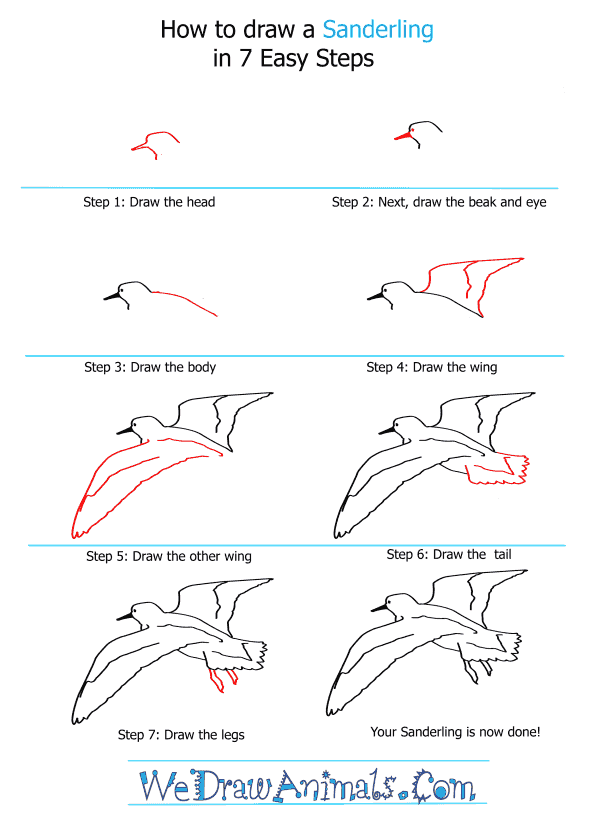In this quick tutorial you'll learn how to draw a Sanderling in 7 easy steps - great for kids and novice artists.
The images above represent how your finished drawing is going to look and the steps involved.
Below are the individual steps - you can click on each one for a High Resolution printable PDF version.
At the bottom you can read some interesting facts about the Sanderling.
Make sure you also check out any of the hundreds of drawing tutorials grouped by category.
How to Draw a Sanderling - Step-by-Step Tutorial
Step 1: First, draw the outline of the head and beak
Step 2: Draw a dot to make the eye and fill in the beak
Step 3: Draw the bird's back with a line continuing from the neck
Step 4: Draw the right wing and some feathers coming out of the back lined
Step 5: Draw the left wing and some feathers starting at the neck and ending where the other wing ends. Make the lines jagged to show feathers
Step 6: Draw the tail with feathers on it. Make a line underneath the second wing to show the body. Draw a triangular shape in the center of the tail and then draw arched and jagged lines around it
Step 7: To finish, draw the feet under the tail
Interesting Facts about the SANDERLING
The Sanderling is a member of the sandpiper family and the scientific term for them is Calidris alba. This animal breeds in the Artic and migrates to other continents, which includes Europe, Asia, Africa, and Australia. Other than their smaller size and thicker beaks than their relatives, they run with a bicycling motion. They form large flocks in the winter, to help each other locate scarce food.
Did you know?
- They eat insects, plants, crustaceans, and crab eggs.
- These birds have usually about 4 eggs.
- It is protected by international law.
- This animal is about 7.5 inches long.
- They have a white color in the winter, but a dark red in summer.
- It has a migration range of over 6,000 miles.
- These animals have no rear toe.
This type of bird eats by penetrating the sand as the tide recedes, so that the ground is soft enough to reach the tiny aquatic animals underneath. The birds lay eggs on rocky areas near lakes and rivers. Their breeding temperature averages about 41 degrees Fahrenheit, and 200 to over 2,000 feet high. Males are very territorial during this stage, but the females often pair with 2 males.








